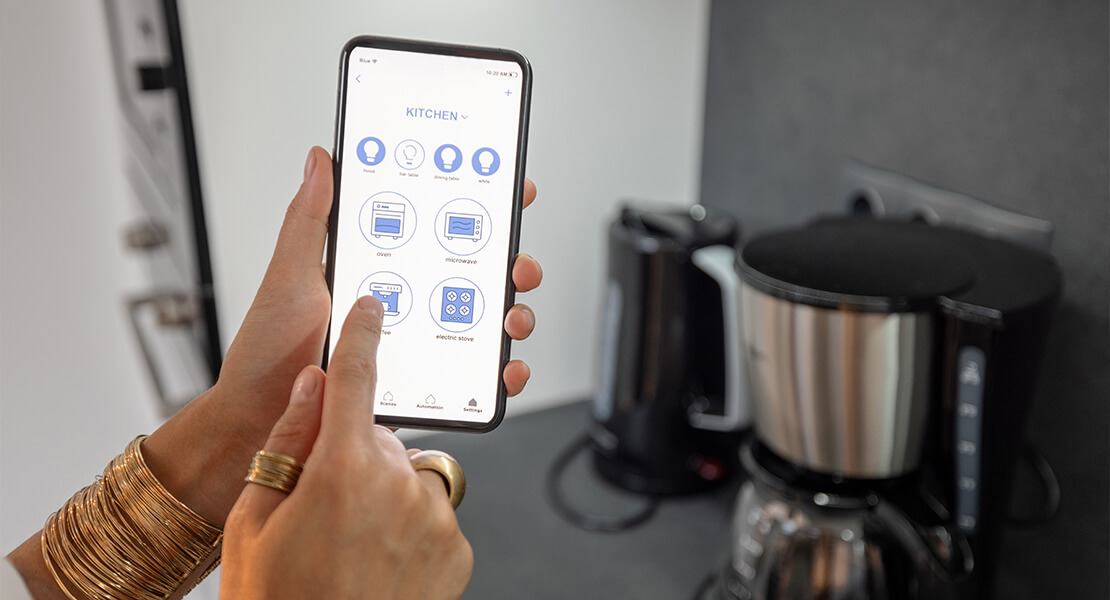
So, you’ve heard about explainer videos—they’re short, engaging, and great for getting across complex ideas fast. But here’s the thing: most explainer videos are built for screens. You watch them, you see the visuals, you read the text. But what happens when you take away the screen entirely? That’s the world we step into with voice-activated platforms like Alexa and Google Assistant.
In this article, we’re going to dig deep into how explainer videos can be adapted—or even reimagined—for voice-first platforms. We’ll chat about why this shift matters, how to craft content that works when there’s no screen to lean on, and what the future holds. Let’s get started.
What Are Voice-Activated Platforms?
Let’s first get on the same page. Voice-activated platforms are those handy assistants that live inside your smart speakers, phones, cars, TVs and even fridges. Think Alexa, Google Assistant, Siri, and Bixby. You talk, they respond. But instead of showing you results, they often tell you—out loud—what you need to know.

Voice interaction has exploded in recent years. Millions of households now have at least one smart speaker, and usage isn’t slowing down. It’s a massive, fast-growing channel, and brands that ignore it risk falling behind. And that’s where explainer content comes in.
Why Traditional Explainer Videos Don’t Work on Voice-Only Platforms
Here’s the challenge: traditional explainer videos rely on a perfect mix of visuals, narration, text overlays, and sometimes even background music to land their message. Now take all of that away—except the voice. It’s like trying to explain how to put together IKEA furniture with your eyes shut.
Let’s take a simple example: imagine a video showing how to connect your smart light bulb to Wi-Fi. If you’re watching a video on YouTube, you’d probably see clear visuals with each tap and swipe. On Alexa, you’ve got nothing but voice to guide you.
So, a rethink is necessary. It’s not just a matter of converting your script into audio—it’s about creating a new experience from the ground up, one designed specifically for voice-first interaction.
The Rise of Voice-First Content
We’re in the early stages of a content revolution. Voice-first design isn’t just a niche thing—it’s a growing category. As more people interact with devices using nothing but their voice, content needs to keep up.
Explainer videos, when done right, are perfect for this. Why? Because they’re already focused on clarity, simplicity, and engagement. The trick is to keep those strengths while adapting to a new, non-visual format. That’s where a voice-first explainer script can shine.
Reimagining the Script: Conversational, Clear, and Guided
So how do you write an explainer that works when there’s no screen? Here’s what you need to keep in mind:

1. It’s All About the Conversation
This isn’t a voiceover—this is a conversation. When someone says “Alexa, how do I reset my smart lock?”, they’re not looking for a lecture. They want a friendly guide. Your script should mirror that tone. Think about how you’d explain the process to a friend over the phone. That’s your starting point.
2. Chunk It Down
With visuals, you can pack a lot into a few seconds. Without them, less is more. Break your script into small, manageable steps. Use clear transitions like “Next”, “After that”, or “Now try this”.
For example:
“Alright, first, open your app. Done? Great. Now tap ‘Settings’ at the bottom right…”
It feels like a real-time walkthrough, and that’s exactly the point.
3. Repetition Helps
People can’t scroll back with their eyes. If they miss something, they need to ask the assistant to repeat. So, a bit of gentle repetition goes a long way. You might summarise key steps or restate them using slightly different words.
Building for Alexa and Google Assistant: What You Need to Know
Creating content for voice platforms means working within their rules and tools. Each platform has its own quirks, but the principles remain largely the same. Here’s a quick rundown of what to expect.
Alexa Skills and Google Actions
When you’re building explainer content for voice platforms like Alexa and Google Assistant, you’re essentially creating voice-driven apps—known as “Skills” for Alexa and “Actions” for Google Assistant. These aren’t traditional apps you tap or swipe; instead, users interact entirely through spoken commands. Once triggered by a phrase like “Alexa, open MyProduct Helper” or “Hey Google, talk to Setup Wizard”, your explainer journey begins. The logic and structure behind these Skills and Actions dictate how smoothly the experience runs, so planning the conversational flow is crucial from the outset.
While the technical setup behind Skills and Actions often requires a developer—especially when adding branching logic or integrating with third-party systems—there are now plenty of no-code and low-code platforms that make this more accessible. Tools like Voiceflow or Jovo allow creators to design and deploy voice content with far less friction. That said, the underlying tech can only take you so far. What truly matters is the user-facing experience: the clarity of your instructions, the tone of your assistant, and how naturally the interaction flows from one step to the next.
Think of your explainer Skill or Action as a guided audio experience with a personality. It should feel more like chatting with a helpful human than being barked at by a robot. Whether you’re walking users through a product setup or explaining how to use a service, the voice needs to be approachable, supportive and intuitive. Users shouldn’t feel overwhelmed or confused—they should feel like they’re being gently guided by someone who knows exactly what they’re doing and is happy to explain things clearly and patiently.
Multimodal Experiences
Even though many users interact with Alexa and Google Assistant on screenless devices, there’s a growing segment using smart displays like the Echo Show and Google Nest Hub. These devices allow for what’s called a “multimodal” experience, where voice instructions can be supported by visuals such as step-by-step images, animated cues, or quick visual confirmations. While this opens the door for richer content, it’s essential not to fall into the trap of relying on visuals to carry the explanation.
A truly effective voice explainer is designed with the assumption that the user has no screen at all. Visuals should be treated as enhancements, not essentials. If a chart or image is helpful, use it—but the voice content should always make sense on its own. In fact, the best multimodal experiences ensure that the visuals merely complement what’s being said. Think of a screen as an optional bonus that can reinforce or clarify what the voice is already delivering, rather than a necessity for understanding the message.
This approach also improves accessibility. Not everyone is watching the screen—even when one is available. Some users may be visually impaired, distracted, or simply listening from another room. Designing with a “voice-first, visual-second” mindset ensures that nobody gets left behind. It also encourages clearer scripting and better pacing. If the voice explainer can confidently guide users without visuals, adding optional on-screen elements will only make the overall experience stronger and more flexible.
Context Awareness
One of the most powerful features of voice platforms is their potential to adapt to context—and yet, many explainers don’t take full advantage of this. Context awareness means understanding where the user is in their journey and responding appropriately. If someone launches your Skill or Action halfway through a process—maybe they’ve already completed the first few steps—the content should be smart enough to skip the repetition and jump to the relevant point. This kind of responsiveness is what transforms a generic explainer into a truly helpful guide.
To make this happen, your voice content needs to be structured with branching logic and checkpoints. You can ask users quick questions to determine their progress—“Have you already downloaded the app?” or “Is your device plugged in?”—and use their responses to direct the flow. This allows you to design multiple entry points that cater to different scenarios. Think of it like a tree with many branches: one user might need a full walkthrough, while another just needs help with the final step. Contextual awareness helps them both without wasting time.
From a user experience perspective, this is a game-changer. Nobody wants to sit through a full set of instructions when they’ve already completed half of it. By acknowledging where the user is and adjusting your response accordingly, you not only save them time but also build trust. It shows that your brand understands and respects the user’s time, and that your explainer isn’t just a static script—it’s a living, responsive conversation built around their needs in the moment. That’s what turns a good explainer into a great one.
Scripting Tips for Voice Explainers
Let’s get a little more hands-on. If you’re planning to write a voice-first explainer, here are a few key principles:

Keep Sentences Short and Snappy
Voice assistants struggle with long-winded explanations. So do people, frankly. Keep things tight.
Bad:
“To initiate the reset procedure, you’ll need to first locate the configuration panel within your mobile application, which can be accessed via the hamburger icon in the upper-right corner.”
Better:
“First, open your app. Then tap the three lines in the top-right corner. That’s your menu.”
Use Natural Language
People talk differently than they write. Make sure your script sounds like actual speech, not a formal document.
Instead of:
“The configuration process has now been completed successfully.”
Say:
“All done! Your device is now reset and ready to go.”
Anticipate User Questions
Your content should feel responsive. If someone’s likely to ask, “What’s a hub?”, include a definition right when you first mention it.
For example:
“You’ll need a hub for this setup—a hub is a device that connects all your smart gadgets together.”
How Brands Are Using Voice Explainers
Let’s look at some examples—real or hypothetical—of how brands are using or could use voice explainer content.
Smart Home Setups
Brands selling smart plugs, lights, thermostats or cameras are using Alexa and Google Assistant to guide users through setup. Instead of digging through a printed manual or YouTube videos, users can just say:
“Alexa, ask SmartPlug Helper how to connect my device.”
From there, the voice assistant walks them through each step.
Cooking and Kitchen Devices
Appliance brands are getting smarter. If someone buys a smart air fryer or sous vide, they might say:
“Hey Google, how do I use my AirCook 3000?”

A voice explainer could walk them through a simple recipe, a device setup, or even maintenance reminders.
Healthcare Devices
For at-home health tech—like blood pressure monitors, glucose trackers or sleep devices—clear explainer content is a game-changer. Patients can ask their assistant:
“Alexa, how do I pair my sleep tracker?”
And get step-by-step help instantly.
Challenges to Watch Out For
Now, it’s not all smooth sailing. Voice-first explainer content comes with its own set of hurdles.
1. Limited Attention Span
Users are usually multitasking—cooking, walking, or cleaning—when they use voice assistants. So your content needs to be ultra-clear and to the point. Rambling? You’ll lose them.
2. Error Recovery
What if they miss a step or give a wrong response? Your content needs to handle those gracefully.
For example:
“I didn’t catch that. Want me to repeat the last step or start over?”
This makes the experience feel forgiving and friendly.
3. Lack of Visual Confirmation
In some cases, users want to see that something worked. So if you can, include optional visual cues for those with smart displays. If not, offer reassuring confirmation in your audio.
“You should now see a blue light on your device. That means it’s connected!”
Testing and Iteration: Don’t Skip This Step
Like any good explainer video, your voice content needs to be tested. But here, it’s even more critical. You’ll want to run through multiple scenarios, listen for awkward phrasings, and watch how real users interact with it.

Tools like Voiceflow or Botmock can help simulate the user journey. If you’re serious about quality, consider user testing with different demographics—what works for a 25-year-old techie might not work for a 60-year-old retiree.
The Future: Where Voice Explainers Are Headed
Looking ahead, the future of voice explainer content is pretty exciting.
1. Personalised voice journeys, where the assistant knows your skill level and adjusts the content accordingly
One of the most exciting shifts on the horizon is the emergence of personalised voice journeys. Imagine asking your voice assistant how to use a new device, and it recognises that you’re a beginner. Instead of diving straight into advanced configurations, it starts with the basics—perhaps even explaining what a smart hub is or how to download the app. On the other hand, if you’re an experienced user, the assistant could skip ahead, offering tips for fine-tuning settings or troubleshooting niche issues. It’s all about tailoring the experience to match your knowledge level and needs.
This kind of smart personalisation requires more than just good scripting—it involves integrating user profiles, behaviour tracking, and preference settings into the experience. While this might sound complex, it offers a major win for engagement and satisfaction. When users feel like the voice assistant “gets them”, they’re more likely to keep using it. For brands, this opens the door to deeper user relationships and better support experiences. It’s no longer just about delivering information—it’s about delivering the right information, at the right time, in the right tone.
2. AI-generated content, dynamically creating responses based on user behaviour
AI is already revolutionising content creation in many fields, and explainer videos for voice platforms are no exception. Soon, we’ll see assistants that don’t rely on rigid scripts, but instead generate content on the fly. Based on a user’s past interactions, preferences, or even the time of day, the voice assistant could create a fully dynamic explanation that feels tailor-made. If a user has previously needed help with similar tasks, for instance, the assistant could streamline the process or suggest shortcuts without being prompted.

The beauty of AI-generated voice explainers lies in their flexibility. Instead of updating static content every few months, brands could maintain a smart system that evolves continuously. This also enables much more responsive troubleshooting. If a user sounds confused, the assistant could alter its explanation in real-time—changing pace, simplifying language, or offering alternatives. It turns what used to be a one-way delivery of instructions into a highly interactive, responsive, and intelligent conversation.
3. Cross-platform syncing, where a setup started on your phone can be continued via Alexa or Google Assistant
As users move fluidly between devices, there’s growing demand for voice explainer experiences that aren’t locked to a single platform. Cross-platform syncing will allow someone to begin setting up a product via an app on their phone, pause part-way through, and later ask Alexa or Google Assistant to continue from exactly where they left off. This seamless transition not only saves time but also reduces frustration—particularly when users get stuck and need hands-free support mid-process.
Making this kind of interoperability work involves synchronising data across systems in a privacy-conscious way. It also means designing content that can adapt depending on which device is being used. For example, if a step was completed via a smartphone app, the voice assistant should be aware of that and avoid repeating instructions unnecessarily. This creates a more cohesive experience, where the assistant becomes a true extension of the setup journey, regardless of the platform. It’s a huge leap forward in accessibility and convenience—and it’s only just beginning.
Final Thoughts
Explainer videos aren’t just for YouTube anymore. In a world that’s increasingly screenless, the voice-first experience is becoming more relevant by the day. If you want your brand to stay accessible, trusted, and forward-thinking, creating explainer content for platforms like Alexa and Google Assistant is a smart move.
Yes, it’s a new challenge—but it’s also a new opportunity. One where your voice—literally—can help users in real time, without them ever lifting a finger. That’s powerful.
If you’re looking for a cutting-edge voice-activated explainer video for your business, get in touch with us at Spiel for a free consultation—we’d love to help you bring your ideas to life.
And honestly? It’s only just getting started.

